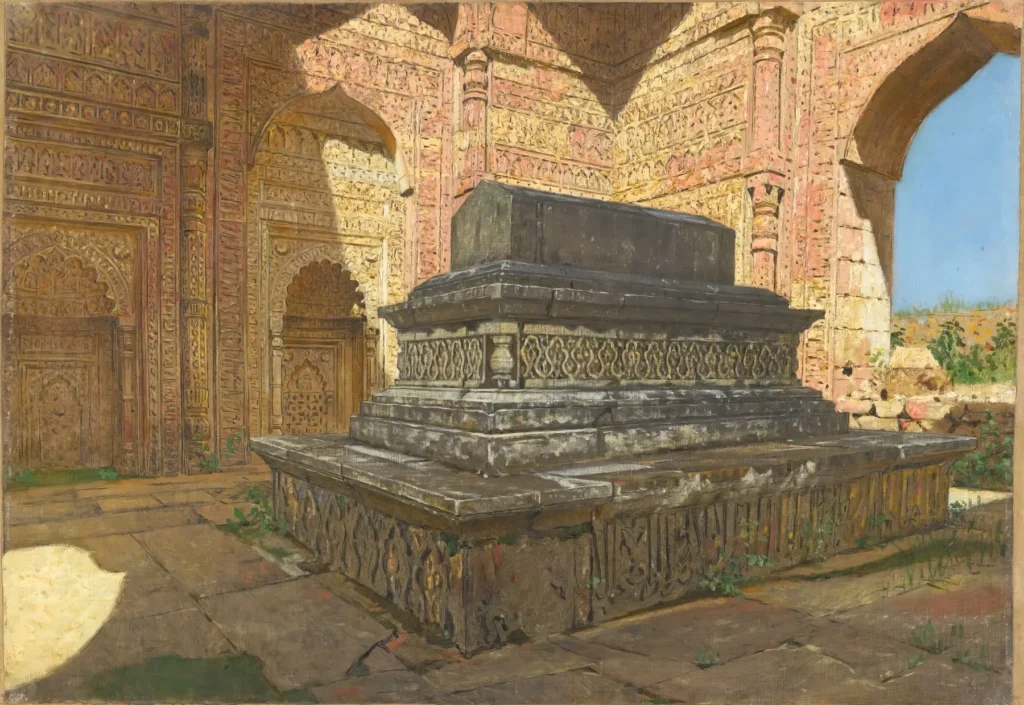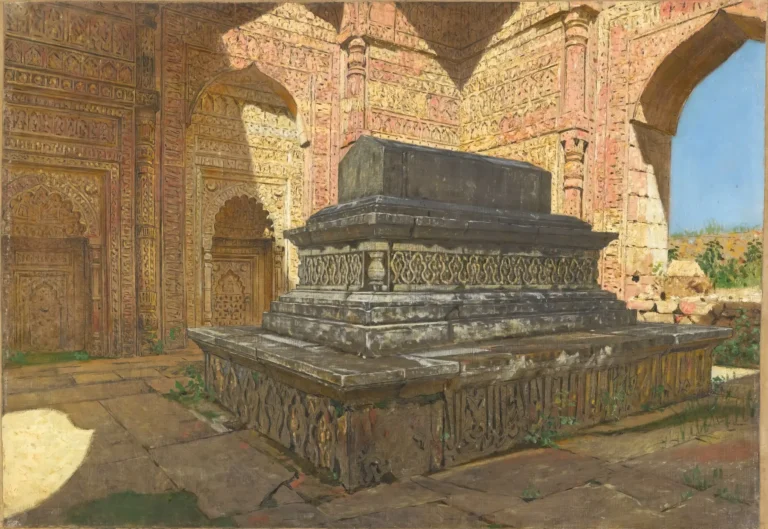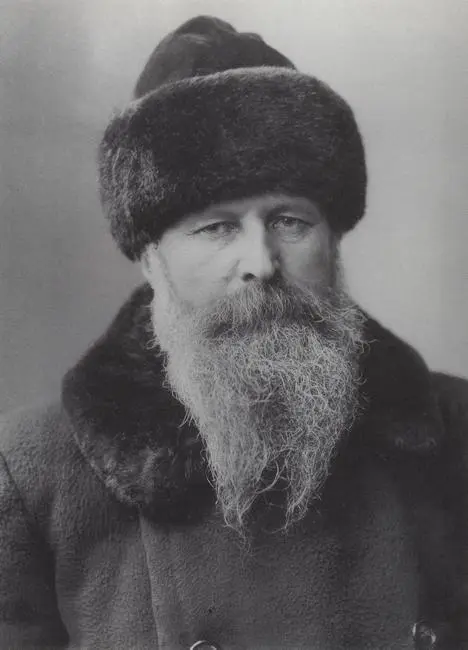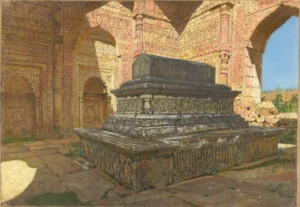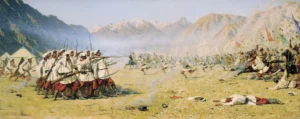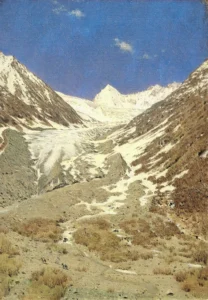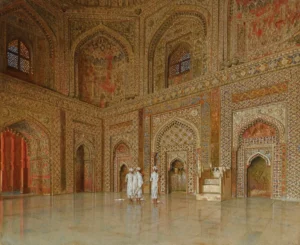Tomb of Sultan Iltutmysh in old Delhi (1875)
Vasily Vereshchagin, an influential Russian painter, traveled extensively through India, creating captivating works that depict various landmarks of the subcontinent. Among his notable subjects are the magnificent Taj Mahal and the exquisite Pearl Mosque in Delhi. Though the Tomb of Sultan Iltutmish is a prominent historical site in New Delhi, it is not among his known works. Vereshchagin’s art not only celebrates architectural beauty but also provides a glimpse into the essence of Indian culture and history.
Late 19th Century
About the Artwork
Vasily Vereshchagin is known for his passionate portrayals of war and architecture alike. His travels took him across Asia, where he nurtured a deep admiration for India's rich and diverse cultural tapestry. The Tomb of Sultan Iltutmish, located in the scenic Qutub Complex of New Delhi, is a striking example of Indo-Islamic architecture dating back to the 13th century. Although Vereshchagin did not paint this tomb, his other works reflect the profound impact that Indian culture had on him and contributed significantly to the Western world's fascination with India's historical and architectural treasures.
Did You Know
Vereshchagin’s works played a significant role in shaping Western perceptions of Eastern cultures, particularly through his detailed rendering of Indian life and architecture.
While known for his depictions of peaceful landscapes and structures, Vereshchagin began his career as a war artist, documenting military conflicts, which influenced his portrayal of human experiences.
Sultan Iltutmish, the third ruler of the Mamluk dynasty in India, is recognized for founding the Delhi Sultanate and significantly contributing to the development of Indo-Islamic architecture, encapsulated in his tomb.




